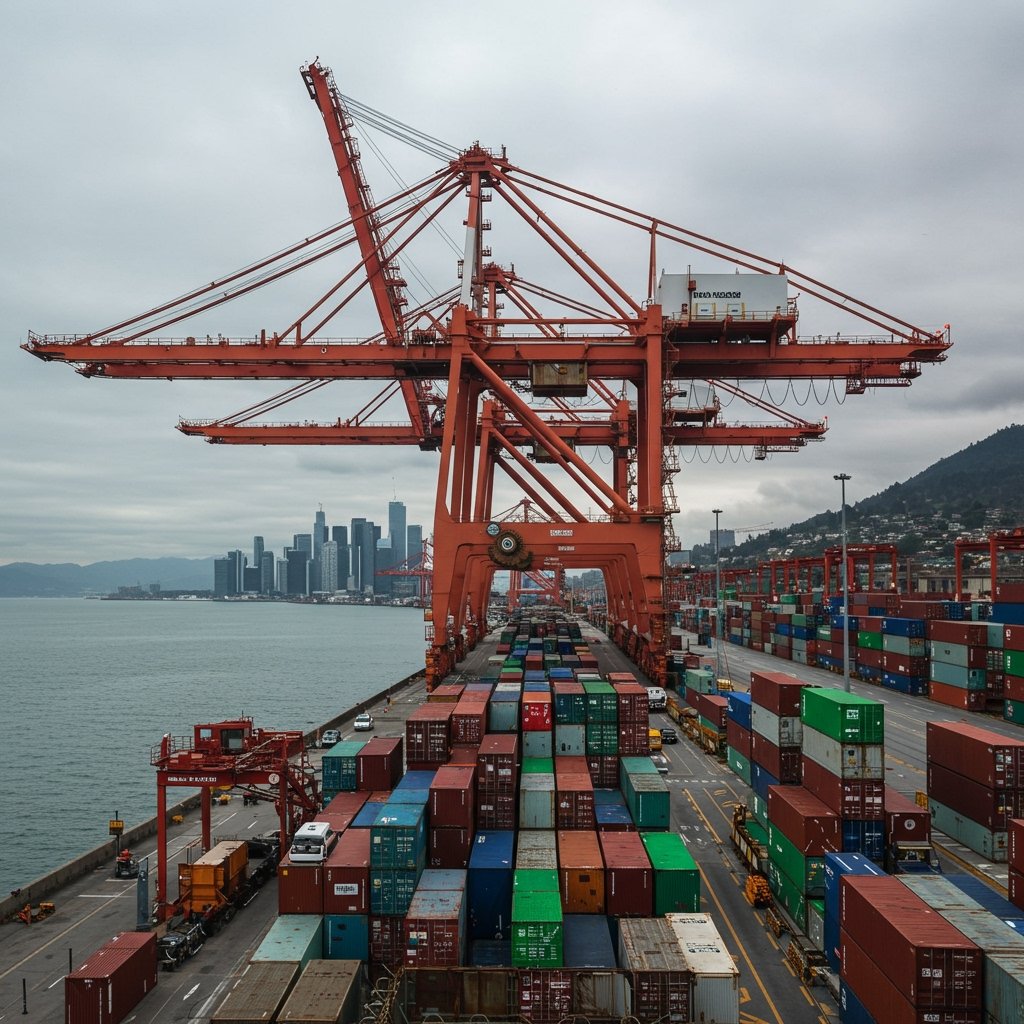Federal Investigation Launched into West Coast’s Pacific Gateway Port Over Alleged Widespread Environmental Violations
A major federal investigation has been launched into the operations of the Pacific Gateway Port Authority, a critical West Coast hub that handles over 25% of U.S. container traffic. The probe is being spearheaded by two key federal entities: the U.S. Environmental Protection Agency (EPA) and the Department of Justice’s Environmental Crimes Section. This formal investigation was directly triggered by a detailed lawsuit filed by the Coastal Protection Alliance, an environmental advocacy group. The lawsuit alleges systemic violations of critical environmental laws, specifically citing breaches of the federal Clean Water Act and California’s environmental statutes. The allegations detailed in the lawsuit and now under federal scrutiny are reported to stretch back a significant period, encompassing operations over the past seven years. The immense scale of the Pacific Gateway Port Authority’s operations underscores the importance of strict adherence to environmental regulations, particularly given its location adjacent to sensitive marine ecosystems.
Allegations Detail Hazardous Waste Disposal and Mitigation Failures
The core accusations driving the federal investigation are twofold and point towards potentially serious environmental harm. Firstly, the probe is examining allegations of the illegal disposal of hazardous industrial waste. The lawsuit claims this waste was introduced directly into sensitive marine ecosystems located within or near the port’s operational footprint. The improper disposal of hazardous materials can have severe and long-lasting impacts on marine life, habitat integrity, and overall water quality. Secondly, the investigation is focused on the alleged deliberate failure to implement required mitigation measures for deep channel dredging projects. Dredging, a routine but environmentally disruptive activity necessary to maintain shipping lanes, typically requires specific measures to minimize harm to aquatic environments, such as controlling sediment dispersal, managing contaminated materials, or protecting sensitive species. The accusation that the port deliberately bypassed these required protective actions suggests a potential knowing disregard for environmental protocols designed to safeguard coastal waters. These specific allegations paint a picture of potentially widespread non-compliance impacting crucial natural resources.
EPA and DOJ Environmental Crimes Section Lead the Scrutiny
The involvement of the U.S. Environmental Protection Agency (EPA) and the Department of Justice’s Environmental Crimes Section signals the high level of federal concern regarding the allegations. The EPA is the primary federal agency tasked with enforcing environmental laws and is likely leading the technical aspects of the investigation, including gathering evidence, inspecting port facilities, and analyzing environmental data to verify the claims made in the lawsuit. The Department of Justice’s Environmental Crimes Section specializes in prosecuting individuals and corporations for serious environmental offenses. Their participation suggests that federal authorities are exploring whether the alleged actions constitute not only civil violations but potentially criminal misconduct under federal environmental statutes. This joint effort between the EPA and DOJ provides the investigation with both the technical expertise for uncovering violations and the legal authority to pursue significant enforcement actions, including potential criminal charges, depending on the findings.
Port Authority Issues Statement Denying Claims
In response to the news of the formal federal investigation, the Pacific Gateway Port Authority issued a public statement on February 6, 2025. In their official communication, port officials directly denied the allegations that have led to the federal probe. While maintaining their denial of any wrongdoing as outlined in the Coastal Protection Alliance lawsuit and now under federal scrutiny, the statement also included a pledge of full cooperation with the U.S. Environmental Protection Agency and the Department of Justice throughout the investigative process. This response represents the port authority’s initial public stance amidst the escalating legal and regulatory pressure. Despite the denial, the federal investigation is expected to proceed rigorously, independently gathering and evaluating evidence related to the alleged environmental violations spanning the past seven years.
Potential Ramifications Include Substantial Fines and Operational Overhauls
Experts observing the situation warn that if the federal investigation substantiates the allegations of widespread environmental violations, the consequences for the Pacific Gateway Port Authority could be severe. Financial penalties are a significant risk, with warnings suggesting the potential for significant fines exceeding $100 million. Environmental fines can be calculated based on the duration, frequency, and severity of violations, making a nine-figure sum possible for extensive, long-term non-compliance. Beyond monetary penalties, experts also anticipate that potential findings could force major operational overhauls at the port. Such changes might be mandated through consent decrees or court orders requiring the port to invest heavily in new pollution control technologies, implement stricter environmental management practices, revise procedures for handling hazardous materials, and alter how future projects, like dredging, are planned and executed to ensure full compliance with environmental laws. These potential outcomes highlight the serious implications of the federal probe for both the port’s financial stability and its future operating procedures.
Ongoing Investigation Signals Heightened Scrutiny
The formal federal investigation into the Pacific Gateway Port Authority remains an active and developing situation. The process will likely involve extensive examination of port records, interviews with current and former employees, and further environmental monitoring. The outcome will hinge on the evidence uncovered by the EPA and DOJ investigators. This case serves as a prominent example of the increasing focus on ensuring large industrial facilities, particularly those in environmentally sensitive areas, are held accountable for adhering to environmental protection laws like the Clean Water Act and state-level regulations. While the port authority denies the allegations and has committed to cooperation, the potential for substantial fines and significant operational changes underscores the gravity of the issues under federal scrutiny, marking a critical juncture for this vital West Coast port.


















